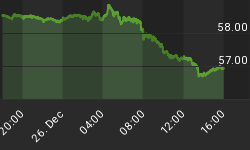Just a few short years after economists and social theorists declared that we had entered the Third Industrial Revolution, the next revolution is already on the horizon. Fueled by artificial intelligence, 5G, the internet of things and augmented reality, these next steps might be the biggest leap forward humanity has ever made. And make no mistake, this revolution will be built on data.
Increasingly, data is being harvested from every aspect of our day-to-day lives. From our purchases to the number of steps we take to our sleep habits or Facebook rants, it’s all being recorded. The information is then being used to advertise to us, to map our neighborhoods and even to sway elections. And this process of data extraction is only accelerating. It is the backbone of new world being built around us.
While the implications are far reaching, at least there is some hope in protecting all of this data. Blockchain technology offers not only a means of privacy in this ever-more-connected world, it presents a compromise. Data is now able to be extracted, stored, utilized and understood without a specific person being identified in the process.
Artificial Intelligence and Blockchain Technology
AI and blockchain technology are a match made in heaven. Blockchains can feed AI data safely and securely. Sensitive and personal data can be used to improve our lives and the lives of future generations, and with blockchain tech’s encryption, the information will remain anonymous and immutable. Related: How Russian Gold Production Will Help Ditch The Dollar
Not only will our information remain safe, the technology will help us better understand decisions made by AI, something that even the brightest programmers on the planet have had trouble with in recent years. Blockchain tech offers a certain transparency and trust in AI functions. If all actions are recorded, the information is auditable and palatable, allowing humans to gain more insight into the robotic minds that are essentially building themselves.
One of the most exciting applications of blockchain technology and AI, however, is in the idea of decentralized autonomous organizations (DAOs). With a growing data set and a secure means of transferring data, smart contracts can be built in order to allow entire companies to operate, grow and learn without human interference.
Imagine Uber as a DAO, for example. Driverless cars, automatic cryptocurrency payments, and a system of system of governance, from the purchase of new cars to tax payments, built with smart contracts. At this point, besides the initial programming, are humans even necessary? Soon, these organizations will become a reality – entire companies will be built, generate income, and pay taxes without a president, CEO, or board of directors running the show.
The Internet of Things and Blockchain Technology
Renewable energy and driverless technology were key features in the Third Industrial Revolution, but now, the Internet of Things is taking energy distribution and transportation to the next level. Smart grids, supply chains and even virtual highways are being built with the help of IoT and blockchain tech.
The 5G revolution promising to usher in a new era of interconnectivity, and blockchain technology will become an increasingly valuable piece of the new digital infrastructure accompanying traditional brick and mortar foundations. The tech will allow companies, governments and individuals to store and digest the tremendous amount of being pulled from the various devices connected to each particular grid.
And with our most critical infrastructure connecting to the web, blockchain tech offers the level of security needed to ensure that all of these systems will remain online and safe from malicious actors.
Cryptocurrencies and the Fourth Industrial Revolution
As the world becomes more digital, and in turn, privacy and security grow in priority, bitcoin and other cryptocurrencies will have a vital role in the Fourth Industrial revolution.
Related: These Are The Top Gold Producing Countries In The World
In a world built on blockchain, hundreds of millions of transactions will be taking place every minute, each with their own purpose and value. From energy trades to taxes paid by DAOs, it’s likely these exchanges will be made on a blockchain with cryptocurrencies. And governments and corporations around the world are beginning to wake up to this notion.
There is a race unfolding across the planet to develop blockchain applications, and the cryptocurrencies to fund them. The real question, however, is how to bring these all together under an easy-to-use umbrella.
One of the biggest debates unfolding in the crypto world involves the sheer number of altcoins in play, each with their own use-case and limited ecosystem. Though the future of bitcoin is bright, and it could very well function as the sole blockchain and cryptocurrency at the center of this new revolution, it’s unlikely that the growth of the altcoin space will slow anytime soon.
Currently, the process to exchange one crypto for another is clunky and costly, but with the addition of a relatively new technology in the blockchain world, atomic swaps, users will be able to instantly exchange any altcoin for bitcoin and vice-versa. This becomes useful in a world awash with cryptos, allowing users to hold bitcoin but buy a coffee with StarbucksCoin without actually having to own StarbucksCoin.
Atomic swaps are only a piece of off-chain, side-chain, and layered network technology currently being developed, and while critics of the crypto-space may be quick to dismiss this new asset class, it’s important to remember that the tech and its potential is still being realized.
By Michael Kern via Crypto Insider
More Top Reads From Safehaven.com:

















